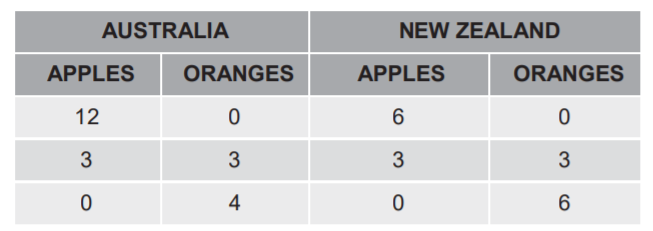Instructions: Answers must be typewritten, graphs can be drawn by hand and inserted in the document. Using the same amount of resources, Australia and New Zealand can both produce apples and oranges as shown in the following table, measured in thousands of tonnes. a) Who has a comparative advantage in producing apples? Who has a comparative advantage in producing oranges? Explain your reasoning (show your calculations) b) Does either country have an absolute advantage in producing both goods? Explain. c) Suppose that both countries are currently producing 3000 tonnes of apples and 3000 tonnes of oranges. Show and explain that both can be better off if they specialise in producing one good and then engage in trade.
Instructions: Answers must be typewritten, graphs can be drawn by hand and inserted in the document.
Using the same amount of resources, Australia and New Zealand can both produce apples and oranges as shown in the following table, measured in thousands of tonnes.
a) Who has a
b) Does either country have an absolute advantage in producing both goods? Explain.
c) Suppose that both countries are currently producing 3000 tonnes of apples and 3000 tonnes of oranges. Show and explain that both can be better off if they specialise in producing one good and then engage in trade.

Step by step
Solved in 2 steps


